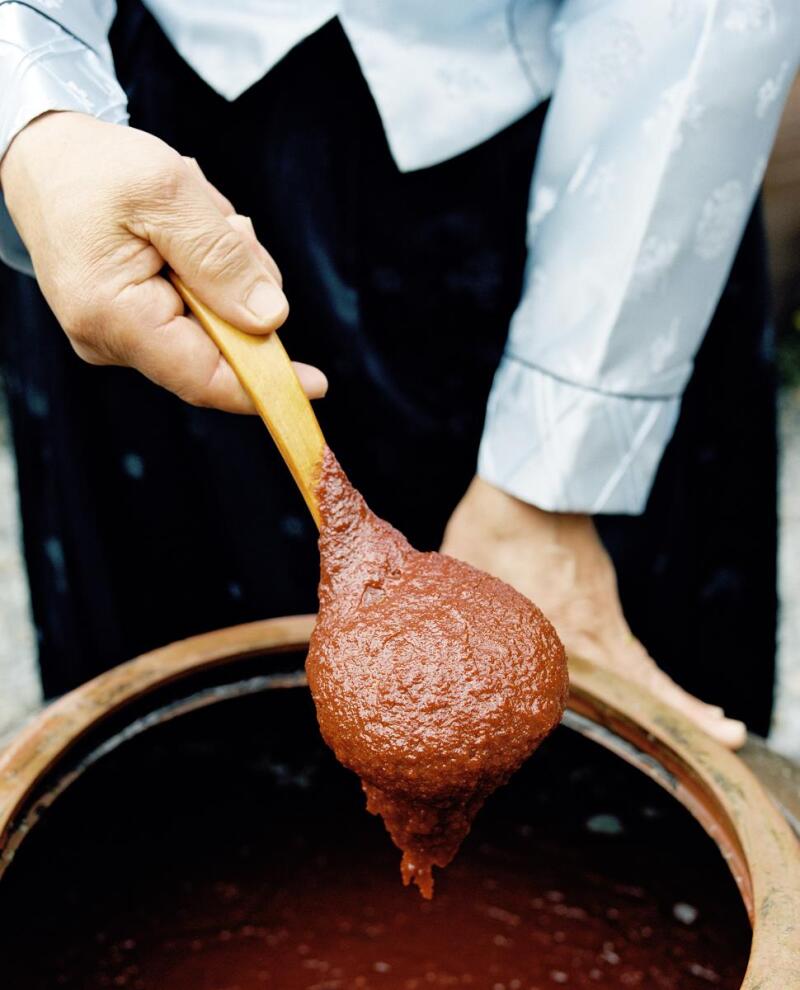When AFAR sent acclaimed Californian chef Russell Moore to Korea to taste his heritage, he got to see his grandmother’s homeland as a diverse and exciting culinary hub. Growing up in Southern California with a Korean mother who wanted nothing to do with the traditional role of a Korean woman, Moore developed a curiosity about authentic Korean food. He wanted to know what the food of his heritage was really like. From the more commonly known dishes to the deliciously obscure, here are the classic Korean foods you should know.

Bibimbap is one of the most popular Korean foods.
Photo by Andrew Rowat for AFAR
Bibimbap
If you’ve eaten any Korean food, it’s probably this: a bowl of rice topped with tidy piles of meat, sautéed veggies, and a sunny-side-up egg arranged like paint on an artist’s palette. Dolsot bibimbap is served in a sizzling-hot stone bowl that makes a crunchy crust of rice along the edges. Yangpun bibimbap is served in a large bowl that is typically shared with others.
Get the recipe for bibimbap from the food blog My Korean Kitchen

Classic galbi includes marinated short ribs.
Photo by Andew Rowat for AFAR
Galbi
Barbecue, Korean style. The classic version is marinated short ribs grilled over wood charcoal. Spinoffs include pork and chicken galbi and tteokgalbi, a patty of minced beef short rib that’s as close as you’ll come to a Korean hamburger. If you’re making galbi at home, don’t rush the marinating—it’s what helps the meat tenderize and retain flavor when it cooks.
Get the recipe for galbi from the food blog Korean Bapsang

One of the hallmarks of bossam is assembling it yourself.
Photo by Andrew Rowat for AFAR
Bossam
This assemble-it-yourself dish means “wrapped.” What you’ll wrap, usually in Napa cabbage or sometimes in lettuce, is thinly sliced boiled pork belly, plus a bit of radish salad and salted shrimp.
Get the recipe for bossam from Korean food blog Kimchimari, or riff on the classic and use Momofuku’s recipe

Step one to successful bindaetteok? Soaking mung beans.
Photo by Andrew Rowat for AFAR
Bindaetteok
To call it a pancake doesn’t really do it justice. For bindaetteok, ground mung beans are pan fried with green onions, kimchi, or sometimes peppers till nice and crusty. It’s so popular that it has made the jump from street food to restaurant staple.
Get the recipe for bindaetteok from chef and blogger Maangchi

Hanjeongsik means that all the food is put on the table at once.
Photo by Andrew Rowat for AFAR
Hanjeongsik
An elaborate feast developed for Korean royalty, it arrives all at once, filling the tabletop with dozens of dishes, instead of one at a time, Western-style. Much thought goes into a hanjeongsik meal, and it is not easily replicated at home.

Banchan is the name for small side dishes.
Photo by Ky Tan/Shutterstock
Banchan
A boggling smorgasbord of complimentary side dishes—kimchi, seaweed salad, pickles, bean sprouts, cucumbers, braised potatoes, and more—accompanies most Korean meals. Eat up, as refills are free.
Get the recipe for 15 banchan from Korean Bapsang

Kimchi is a staple in Korean food.
Photo by Andrew Rowat for AFAR
Kimchi
Korea’s iconic side dish of spicy and sour fermented vegetables, kimchi is a staple of Korean cuisine. It is traditionally made with Napa cabbage and radishes, with seasonings that include garlic, ginger, fish sauce, salted shrimp, and hot pepper flakes.
Get the recipe for kimchi from Maangchi

Gochujang has a thick texture, and is usually thinned with liquid.
Photo by Andrew Rowat for AFAR
Gochujang
Although the spicy condiment may look like ketchup, it’s made from red chili, glutinous rice, fermented soybeans, and salt. Because of its thickness, gochujang is often used as a paste in marinades, or thinned with water for soups and sauces.
Get the recipe for gochujang from Kimchimari

Doenjang is also sometimes used as a relish.
Photo by Sungsu Han/Shutterstock
Doenjang
This fermented soybean paste is relied on to add more depth
and umami to so many Korean dishes. It’s something like miso—but on steroids. One of its most popular uses is as a base for doenjang jjigae, a classic Korean stew.
Get the recipe for doenjang from Maangchi

Makgeolli has a cloudy appearance.
Photo by Shutterstock
Makgeolli
The milky white rice wine everyone drinks while gobbling bindaetteok is a million times better when fresh, rather than heated and sealed for an overseas journey.
Get the recipe for makgeolli from Maangchi

Soju is typically consumed neat.
Photo by Shutterstock
Soju
A clear, powerful, and ubiquitous booze, à la vodka, soju is distilled from rice, barley, wheat, or potatoes and served neat or in cocktails.
This article originally appeared in the May 2015 issue. It was updated with more information and republished in July 2020.
>>Next: International Cookbooks That Will Bring the Spirit of Travel to Your Table











